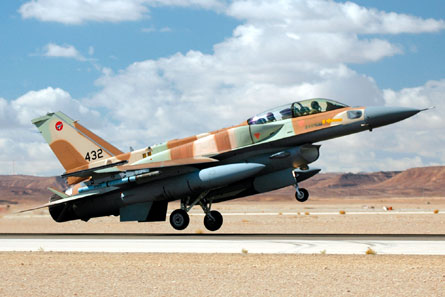By Arie Egozi in Tel Aviv
Offensive fails to halt Hezbollah rocket attacks despite mounting intense air campaign into southern Lebanon
Israel's ongoing campaign against Hezbollah militants in southern Lebanon has served to illustrate the limitations of air power, with more than 4,500 offensive sorties conducted by the country's air force so far having failed to halt the barrage of rockets falling on cities and towns in northern Israel.
"An air force cannot stick the flag on the hilltop," says chief of the Israeli general staff and former air force commander Lt Gen Dan Halutz. His comment reflects a growing feeling in the country that air power alone cannot resolve the crisis, even though the fighting is between a well-equipped military and a guerrilla organisation.
Dubbed Operation Change of Direction by Israel, the war in Lebanon broke out on 12 July, after Hezbollah fighters attacked an Israeli patrol along the nations' shared border, killing several soldiers and capturing two. The Israeli air force had by the middle of last week performed over 4,500 combat missions, predominantly using its Lockheed Martin F-16 fighters (below), with more than 700 offensive missions flown using its Boeing AH-64A/D Apache attack helicopters.
|
|---|
| Israeli air force F-16s had flown the bulk of the 4,500 combat missions recorded by the middle of last week |
In response, Hezbollah had fired almost 1,400 rockets and missiles into Israel by 26 July. Israeli intelligence estimates the organisation has amassed a stockpile of 13,000 rockets since Israeli forces withdrew from southern Lebanon in 2000.
Israel launched massive air strikes against Hezbollah leaders and command-and-control facilities in southern Lebanon and Beirut following the border clash, but the limitations of its tactics rapidly became apparent. One of the organisation's heavily reinforced bunkers in Beirut survived the attacks, including one strike in which air force F-16s dropped 23t of bombs on the target almost simultaneously. In preparation for another attempt, Israel last week took accelerated delivery of Raytheon GBU-28 bunker-busting bombs ordered from the USA last year under a $30 million deal to equip its Boeing F-15Is.
OPINION |
|---|
| The accuracy and destructive force of Israel's air power has increased since the 1970s. This time its effectiveness is limited. Read our leading article. |
In the first days of the fighting, Israel's main effort was to destroy Hezbollah's ability to launch Katyusha rockets and Iranian and Syrian-sourced Fajr-3, Fajr-5 and Zelzal missiles into its territory. This effort was partially successful, but the massive scale of the Hezbollah offensive could not be halted, despite round-the-clock air activity. The air force conducted precision attacks against mobile rocket launchers concealed near trees and buildings in southern Lebanese villages, but has caused a high level of collateral damage in Beirut due to Hezbollah's location of command centres in residential areas. The service dispensed warning leaflets over some city areas in an attempt to minimise the number of civilian casualties.
The demands of the conflict have placed a huge burden on Israeli pilots and ground crews, and many reserve pilots have been called up for duty. The service had also lost four aircraft by last week, including one F-16I to a landing-gear failure on take-off and three Apaches. Two AH-64As collided in mid-air while preparing for a mission in Lebanon on 20 July, killing one crew member and injuring another three. An AH-64D Apache Longbow was also lost on 24 July, when its main rotor separated during a fire suppression mission near the Lebanese border.
An investigation into the latter incident is centred on either a catastrophic mechanical failure or on the aircraft having been struck by Israeli ground fire, as artillery batteries were producing a high volume of firepower in the crash area at the time of the accident.
Israel's inability to intercept incoming rockets has prompted its defence forces to field a limited early-warning capability, deploying a Patriot missile battery to the northern city of Haifa - which has so far been hit by over 1,000 projectiles - to provide a 1min warning of incoming fire. Israel's two IAI Arrow anti-ballistic missile batteries are incapable of defending against the less-sophisticated rockets.
Israel in May selected a joint proposal from Rafael and Raytheon to develop a "hit-to-kill" weapon to meet a new requirement for a short-range anti-ballistic missile defence system. Intended to intercept Kassam rockets fired from Gaza and missiles launched from Lebanon, the system will be developed using funding from Israel and the USA.
In the first phase of the fighting, the air force tried to stop the rocket barrage almost on its own, with ground forces later crossing the Lebanese border. Former air force chief of staff Maj Gen (Res) Eitan Ben-Eliahu argues that the difficulties being experienced in tackling Hezbollah do not stem merely from air power limitations. "Air power or ground power or a combination of these alone cannot achieve the goal of a country like Israel that was forced to fight," he says. "If the military power is not complemented by diplomatic actions its effect is greatly reduced."
Source: Flight International
























